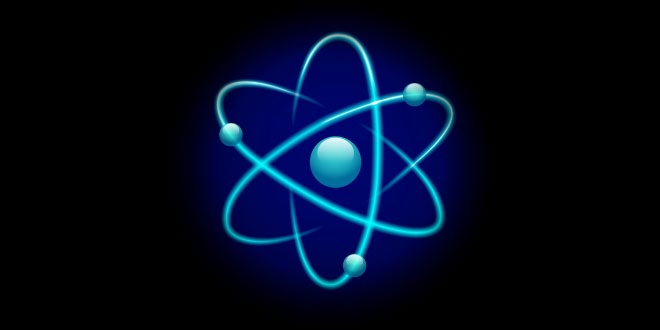Question: What is an election? State its relative mass and charge.
Answer: The negatively charged particle found in the atoms of all elements is known as electron. The relative mass of an election is 1/1840 u & charge is – 1 (minus one).
Question: What is the absolute mass & charge of an election?
Answer:
Absolute Mass → 9 × 1028 g
Absolute Charge → 1.6 × 1019 coulomb
Question: What is the absolute mass & charge of a proton?
Answer:
Absolute Mass → 1.6 × 1024 g
Absolute Charge → 1.6 × 1019 coulomb
Question: What are canal rays?
Answer: Canal rays are positively charged radiations which led to the discovery of positively charged sub-atomic particle called proton.
Question: If an atom contains one electron and one proton, will it carry any charge or not?
Answer: The atom will be electrically neutral as one –ve charge balances one +ve charge.
Question: On the basis of Thomson’s model of an atom, explain how the atom is neutral as a whole.
Answer: According to Thomson’s model of an atom
- An atom consists of a positively charged sphere and the electrons are embedded in it
- The negative and positive charges are equal in magnitude. So the atom is electrically neutral
Question: On the basis of Rutherford’s model of an atom, which sub-atomic particle is present in the nucleus of an atom?
Answer: As per Rutherford’s model of an atom, the protons which are positively charged are present in the nucleus of an atom.
Question: What do you think would be the observation if the a-particle scattering experiment is carried out using a foil of a metal other than gold?
Answer: On using any metal foil, the observations of the a-particle scattering experiment would remain the same as all atoms would have same structure.
Question: Name the three sub-atomic particles of an atom.
Answer: The sub-atomic particles of an atom are:
Protons → Positively charged
Electrons → Negatively charged
Neutrons → No charge
Question: Helium atom has an atomic mass of 4 u and two protons in its nucleus. How many neutrons does it have?
Answer:
Atomic mass of He = 4 u.
Atomic mass = No. of protons + No. of neutrons
∴ 4 = 2 + no. of neutrons
∴ No. of neutrons = 4 – 2 = 2
Helium atom has 2 neutrons.
Question: Write the distribution of electrons in carbon and sodium atoms.
Answer:
Write the distribution of electrons in carbon and sodium atoms.
Carbon Atomic Number = 6
∴ No. of Protons = 6
and Number of protons = Number of electrons
∴ Distribution of electrons = KL
24
Sodium Atomic Number = 11
∴ No. of Protons = 11 = No. of electrons
and Number of protons = Number of electrons
∴ Distribution of electrons = K L M
2 8 1
Question: If K and L shells of an atom are full, then what would be the total number of electrons in the atom?
Answer: K shell can hold 2 electrons and L shell can hold 8 electrons.When both the shells are full, there will be (8 + 2) 10 electrons in the atom.
Question: How will you find the valency of chlorine, sulphur and magnesium?
Answer: Valency is the combing capacity of an atom of an element.
Chlorine, Atomic Number = 17
∴ Protons = 17, Electrons = 17
∴ Distribution of elections = K L M
2 8 7
Chlorine needs 1 electron to complete its outermost orbit/shell.
∴ Its valency is -1 (gains 1 electron).
Sulphur, Atomic number = 16
∴ Protons = 16, Electrons = 16
∴ Distribution of elections = K L M
2 8 6
Sulphur needs 2 electrons to complete its outermost shell.
∴ Its valency is -2 (gains 2 electron)
Magnesium, Atomic number = 12
∴ Protons = 12, Electrons = 12
∴ Distribution of elections = K L M
2 8 2
Magnesium needs to donate 2 electrons from its outermost shell.
∴ Its valency needs to donate + 2 (gains 2 electron)
 Class Notes NCERT Solutions for CBSE Students
Class Notes NCERT Solutions for CBSE Students





